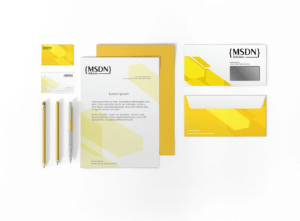Cloud computing has become an essential technology for businesses and individuals alike. But what exactly is cloud computing, and how does it work?
In simple terms, cloud computing refers to the delivery of computing services, including software, storage, and processing power, over the internet. Instead of relying on physical hardware, such as servers and hard drives, cloud computing allows users to access these services remotely, from anywhere with an internet connection.
Cloud computing is divided into three main categories: Software as a Service (SaaS), Platform as a Service (PaaS), and Infrastructure as a Service (IaaS).
SaaS refers to software applications that are hosted on a cloud provider’s servers and accessed over the internet. Examples of SaaS applications include email, customer relationship management (CRM) software, and productivity tools like Google Docs and Microsoft Office 365.
PaaS refers to a cloud computing model where a provider offers a platform for developing, testing, and deploying applications. PaaS provides developers with the tools and infrastructure needed to create and deploy applications without having to manage the underlying infrastructure.
IaaS is the most basic level of cloud computing, providing virtualized computing resources, such as servers, storage, and networking, over the internet. With IaaS, users can create and manage their own virtual machines, install and run their own operating systems and applications, and manage their own storage and networking.
One of the primary benefits of cloud computing is its flexibility. With cloud computing, businesses and individuals can scale their computing resources up or down based on their needs. This allows businesses to adapt to changing market conditions and seasonal fluctuations in demand without having to invest in expensive hardware.
Cloud computing also offers significant cost savings. With cloud computing, businesses only pay for the resources they use, rather than having to invest in and maintain their own physical hardware. This can result in significant cost savings, particularly for small and medium-sized businesses.
Cloud computing also offers enhanced security. Cloud providers typically have dedicated security teams and advanced security measures, such as firewalls and intrusion detection systems, in place to protect their customers’ data. This can provide businesses with a higher level of security than they would be able to achieve on their own.
Another benefit of cloud computing is its ease of use. Cloud providers typically offer simple web interfaces that allow users to quickly and easily manage their computing resources. This makes it easy for businesses to get up and running with cloud computing, even if they have limited technical expertise.
However, there are also some potential downsides to cloud computing. One of the primary concerns is data security. While cloud providers typically offer advanced security measures, businesses must still take steps to protect their data, such as using strong passwords and encryption.
Another potential concern is vendor lock-in. When businesses rely on a particular cloud provider, they may find it difficult to switch to a different provider or to move their data to an on-premise solution. This can result in reduced flexibility and increased costs in the long run.
In conclusion, cloud computing has become an essential technology for businesses and individuals alike. Cloud computing allows users to access computing resources over the internet, providing flexibility, cost savings, enhanced security, and ease of use. However, businesses must also be aware of potential concerns, such as data security and vendor lock-in, and take steps to mitigate these risks. By understanding the benefits and potential drawbacks of cloud computing, businesses can make informed decisions about whether or not to adopt this technology.









